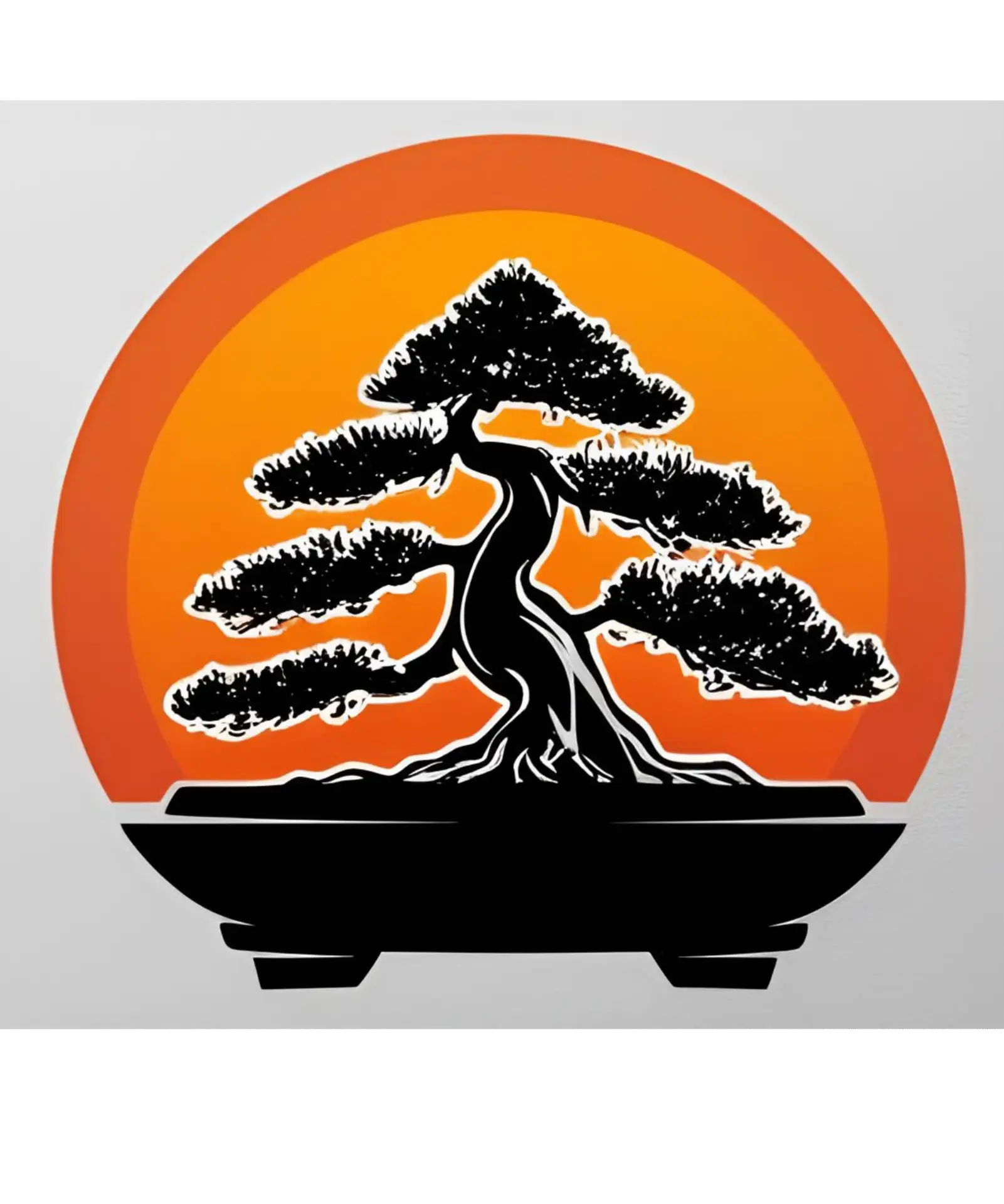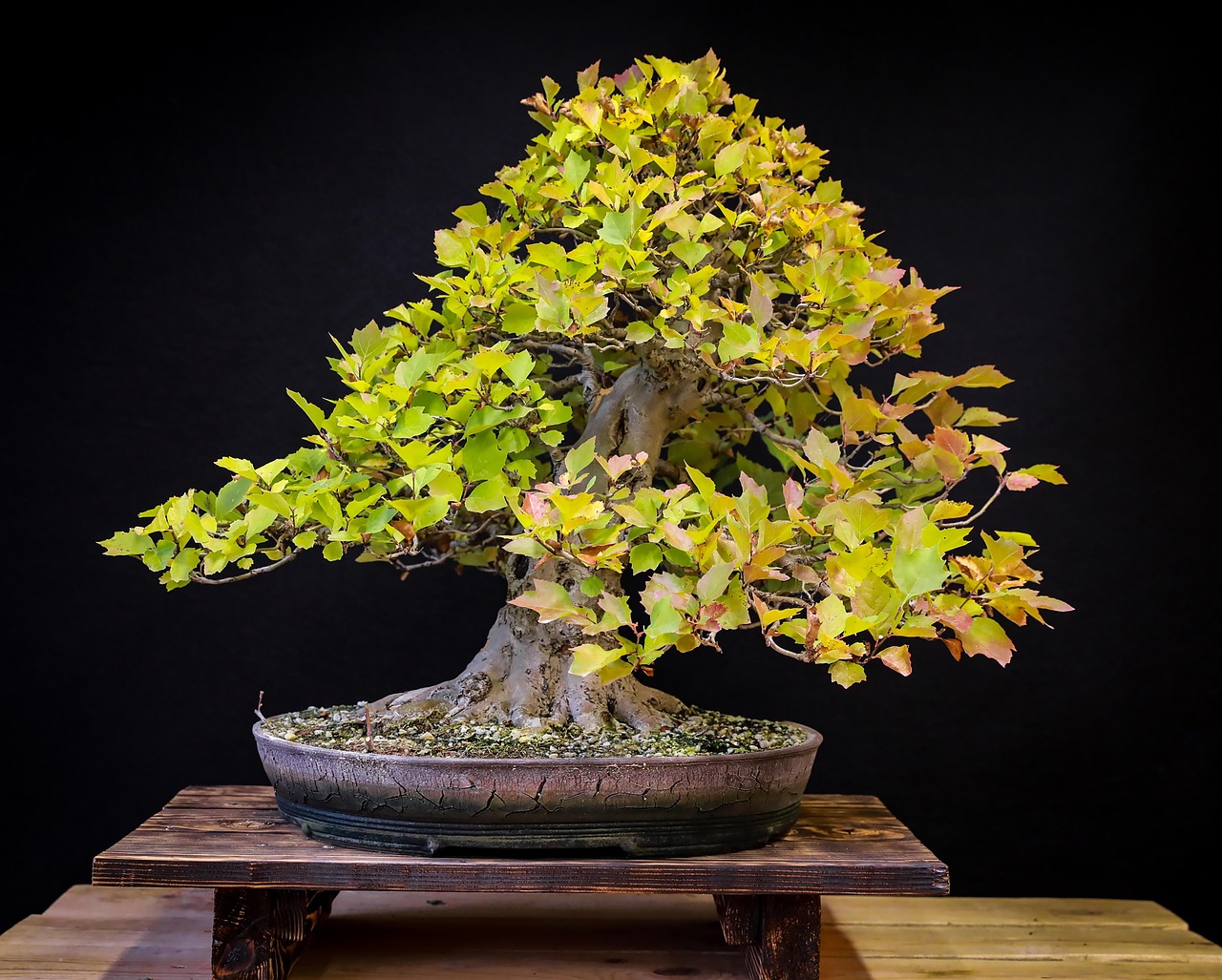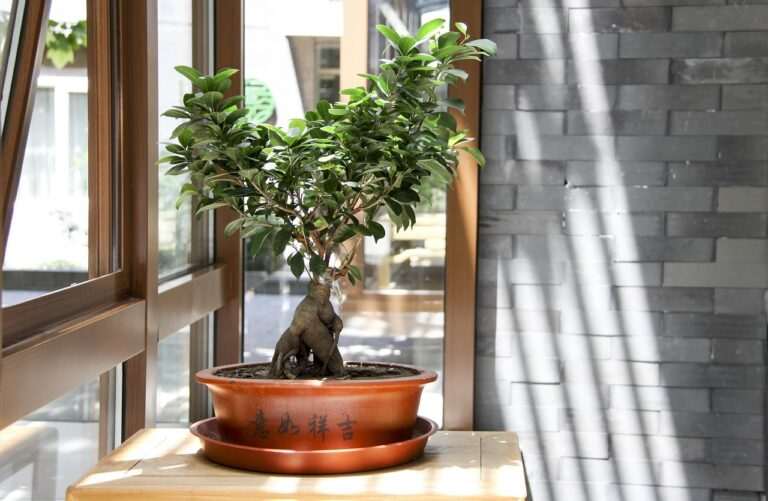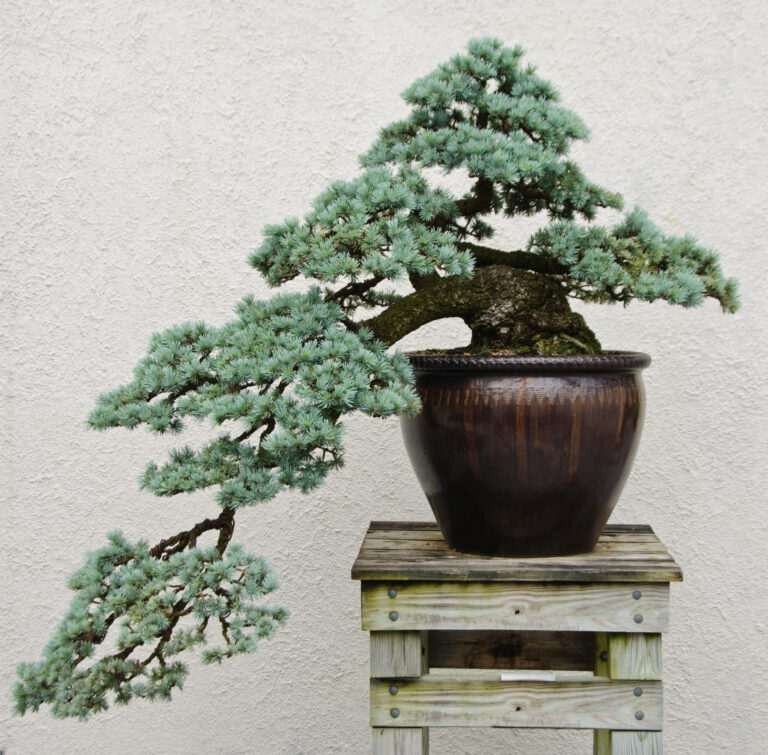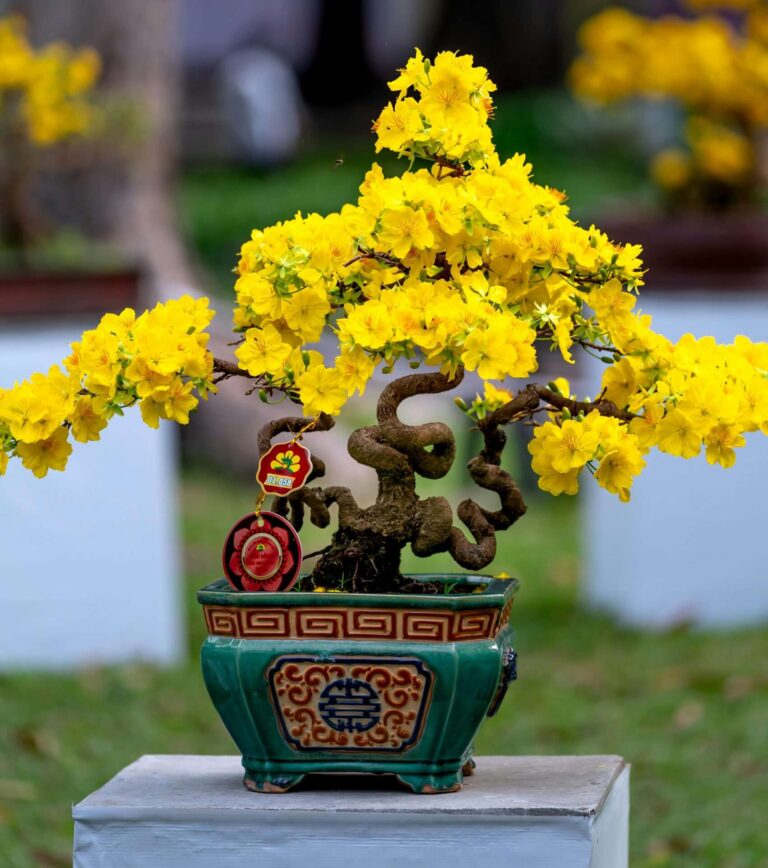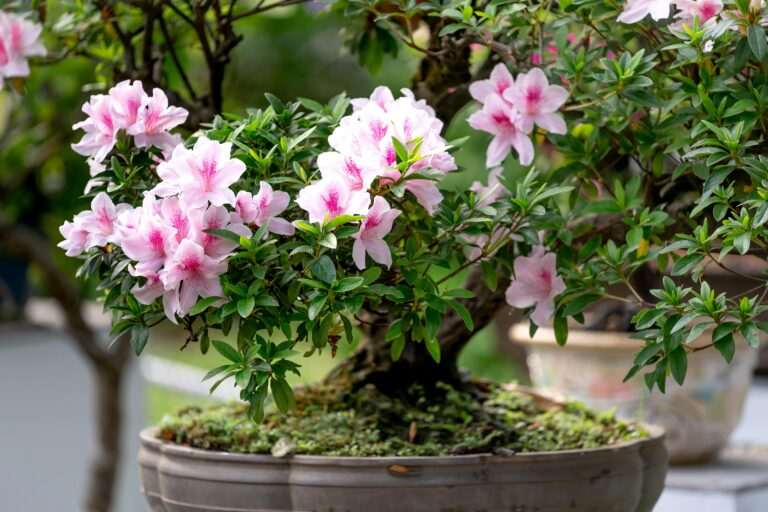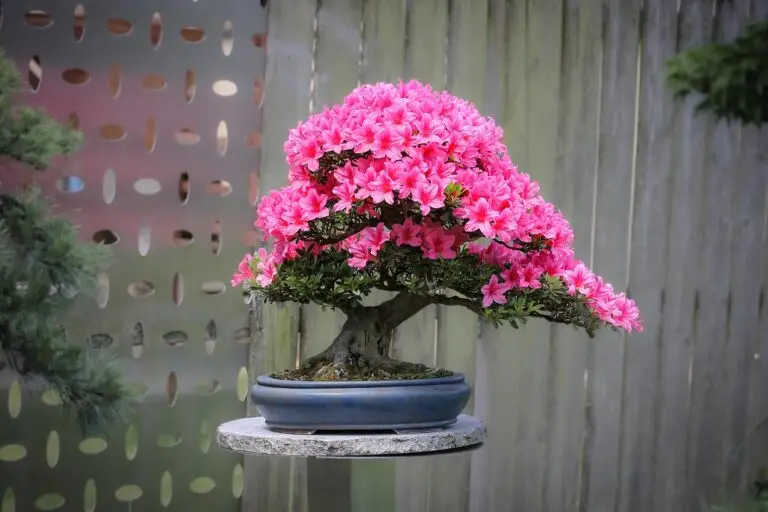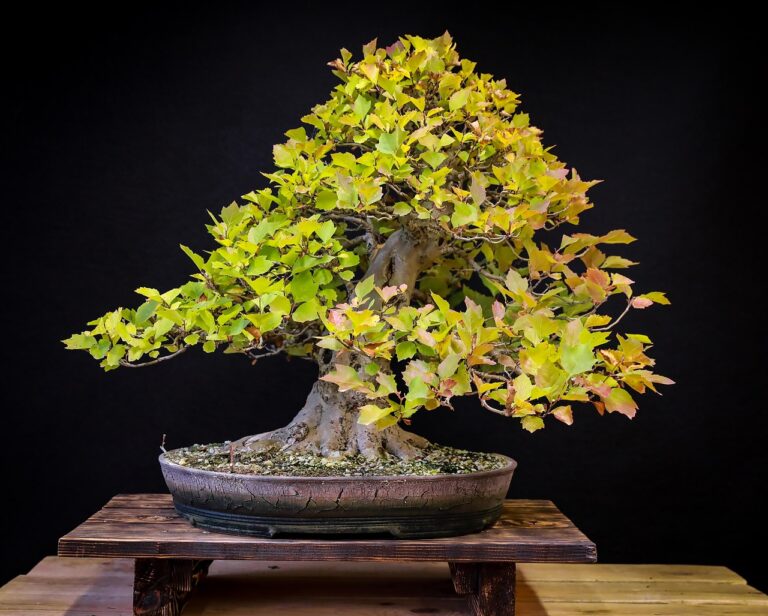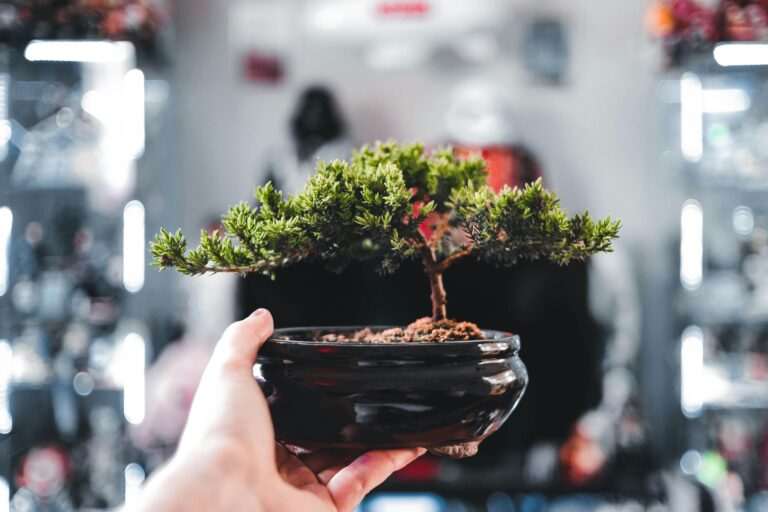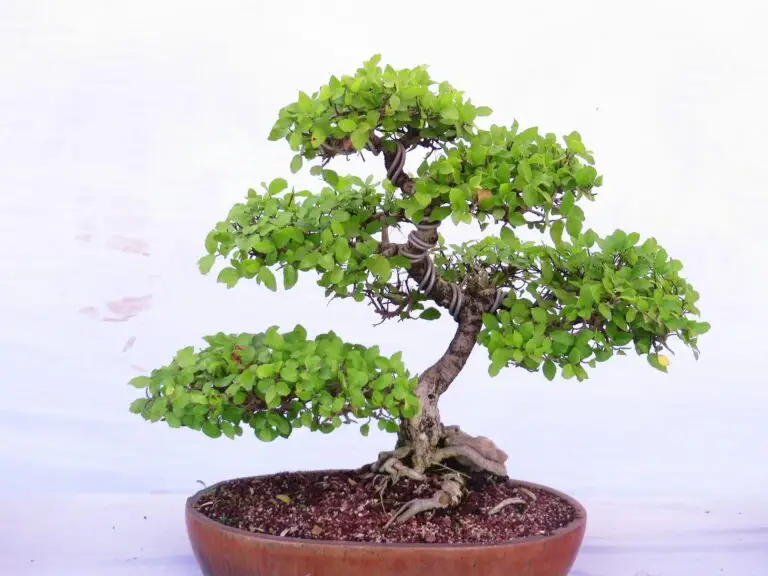Related Articles
Bonsai Trees For Indoors by Master Mori.
Ah, so you seek to bring the spirit of the forest into your home — a noble endeavor indeed. In this guide, we explore five trusted companions well-suited for indoor life: the hardy Ficus, the elegant Chinese Elm, the flowering Serissa, the compact Jade, and the resilient Snow Rose. Each of these trees has its own character and charm, yet all can thrive with modest light, steady care, and a patient heart. Choose the one that speaks to you, tend it well, and it shall bring peace, balance, and a quiet beauty to your living space.
So roll up your sleeves and open your mind. This, my friend, is the ancient art of indoor bonsai tree care — and if you walk the path carefully, your tree will thrive… and perhaps, whisper its own wisdom in return.

Quick Overview: Best Bonsai Trees for Indoors
Ficus Bonsai – The most beginner-friendly indoor bonsai tree
Jade Bonsai – A succulent bonsai with minimal care needs
Chinese Elm Bonsai – Versatile, forgiving, and elegant
Schefflera (Umbrella Tree) Bonsai – Hardy and adaptable
Serissa Bonsai (Tree of a Thousand Stars) – Beautiful, but demanding
Sago Palm (Not a true bonsai, but a striking indoor tree) – Care Guide
Why Keep Bonsai Trees Indoors?
While many bonsai species prefer the whisper of the wind and the kiss of the sun outdoors, several trees adapt gracefully to indoor life. These trees:
Thrive in lower humidity and indirect light
Require less seasonal change
Bring a constant source of mindfulness and beauty to your interior spaces
“Even the smallest tree, placed by the window, can teach stillness greater than a forest.”
Let us now explore the best bonsai trees for indoors, and find the one that suits both your soul and your living space.
Read Our: Indoor Bonsai Care Guide
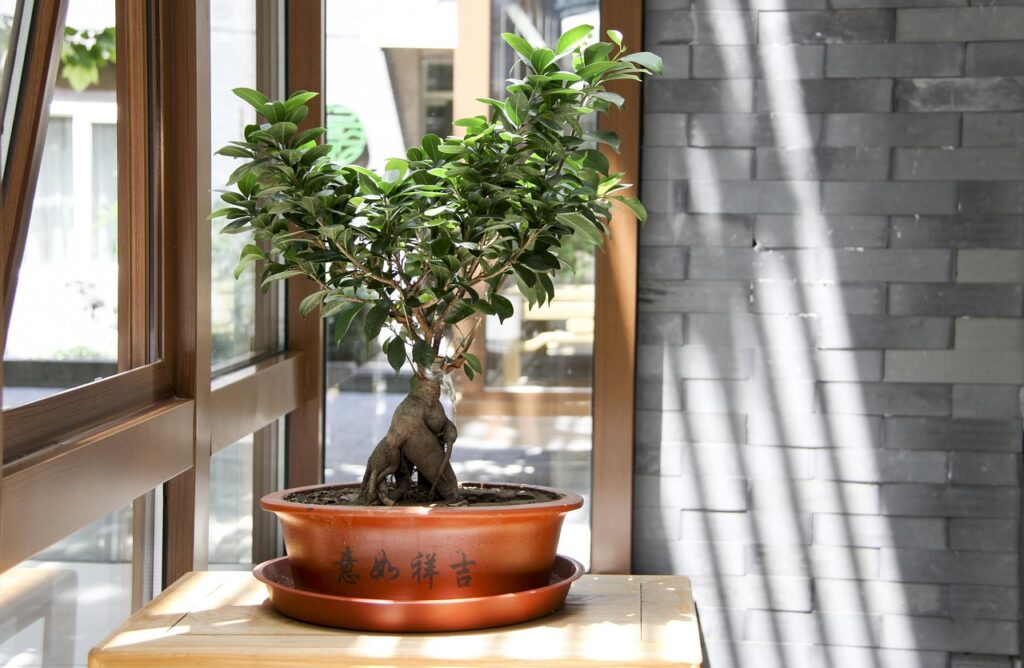
1. Ficus Bonsai (Ficus Retusa / Ficus Ginseng)
Our first and perhaps most popular bonsai trees for indoors is the Ficus. If you are new to bonsai and want a tree that forgives your early mistakes, start here.
Light Needs: Bright, indirect sunlight
Watering: Let topsoil dry slightly between waterings
Humidity: Moderate
Growth Style: Strong trunk, small glossy leaves, great for shaping
Best For: Beginners, office desks, living rooms
“The ficus does not demand perfection — only presence.”
Read Our: Ficus Bonsai Care Guide

2. Jade Bonsai (Crassula ovata)
A succulent bonsai? Yes! The jade bonsai is beloved for its chubby leaves and drought tolerance. The Jade is a brilliant bonsai tree for indoors.
Light Needs: Bright, direct sunlight if possible
Watering: Infrequent; overwatering is its enemy
Humidity: Low to moderate
Growth Style: Thick trunk, compact, informal upright
Best For: Busy plant parents, minimalists, sunny kitchens
“Like the wise, the jade stores strength in stillness.”
Read Our: Jade Bonsai Care Guide

3. Chinese Elm Bonsai (Ulmus parvifolia)
The Chinese Elm is a classic bonsai tree for indoors, it is known for its small serrated leaves and beautiful ramification.
Light Needs: Prefers full light, but tolerates partial indoor light
Watering: Regular; likes moist but not soggy soil
Humidity: Moderate
Growth Style: Elegant taper, natural branching
Best For: Learners ready to level up
“Elm teaches us grace through gradual growth.”
Read Our: Chinese Elm Bonsai Care Guide
4. Schefflera Bonsai (Umbrella Tree)
Often overlooked, the Schefflera is a tough, adaptable indoor bonsai that thrives in low light and with irregular care.
Light Needs: Medium to low indirect light
Watering: Moderate; tolerates missed waterings
Humidity: High preferred, but tolerates low
Growth Style: Unique leaf clusters like umbrellas
Best For: Apartments, busy lives, low-light rooms
“The schefflera bends, but it does not break.”
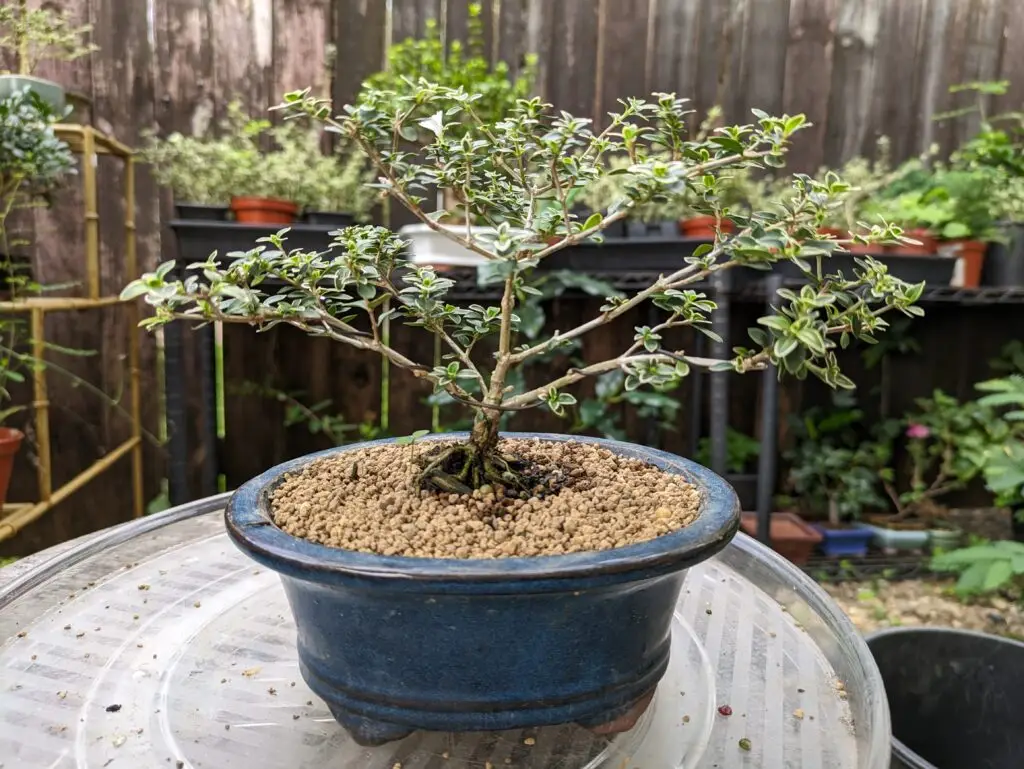
5. Serissa Bonsai (Tree of a Thousand Stars)
Beautiful and fragrant, the Serissa blooms with tiny white flowers — but it is not for the faint of heart.
Light Needs: Bright, indirect sunlight
Watering: Keep soil slightly moist at all times
Humidity: High; dislikes dry air
Growth Style: Delicate trunk, blooms in spring
Best For: Experienced bonsai keepers
“Serissa rewards patience with blossoms; impatience with leaves on the floor.”
Read Our: Serissa Bonsai Care Guide
Bonus: Sago Palm (Cycas revoluta)
Not a true bonsai, but often trained in bonsai form. The Sago Palm is a prehistoric beauty with sculptural charm.
Light Needs: Bright light, some direct sun
Watering: Low
Humidity: Low to moderate
Growth Style: Palm-like, dramatic presence
Best For: Statement pieces, modern interiors
“Some trees do not speak softly. They make their presence known.”
Choosing the Best Bonsai Trees For Indoors
Here is what to consider when selecting your indoor bonsai species:
| Your Lifestyle | Recommended Bonsai |
|---|---|
| Total beginner | Ficus, Jade |
| Busy schedule | Jade, Schefflera |
| Humid environment | Serissa, Chinese Elm |
| Low-light home | Schefflera, Jade |
| Seeking challenge | Serissa, Chinese Elm |
Final Thoughts from Master Mori
The best bonsai trees for indoors is not the most expensive, nor the most exotic. It is the one that speaks softly to your soul — and fits the rhythm of your home.
“Choose with care, tend with heart, and the tree shall teach you the rest.”
So go, place your bonsai near the morning sun, and let your journey begin — one mindful watering at a time.
— Master Mori
Related Blogs – www.bonsaiempire.com
